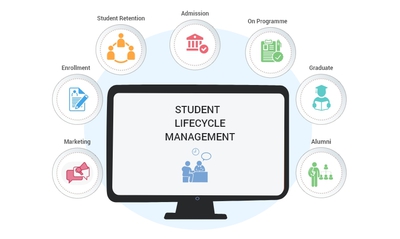|
The National Education Policy (NEP) of India, launched in July 2020, represents a significant overhaul and comprehensive reform of the country's education system. It aims to address the evolving needs of a rapidly changing world by providing a framework that promotes holistic development, flexibility, and inclusivity across all levels of education. The policy emphasizes universal access to quality education, from early childhood to higher education, focusing on foundational literacy and numeracy, multidisciplinary learning, and skill development. NEP also emphasizes the integration of technology in education, promotion of Indian languages, and enhancement of teacher training and professional development. Overall, NEP seeks to transform India's education landscape to foster creativity, critical thinking, and innovation among learners, preparing them to thrive in a globalized and knowledge-driven economy.
Holistic Education: NEP emphasizes a shift from rote learning to holistic and multidisciplinary education, focusing on critical thinking, creativity, and conceptual understanding.
Early Childhood Care and Education (ECCE): The policy emphasizes universal access to quality ECCE for children aged 3-6 years, promoting their holistic development.
Curriculum and Pedagogy Reform: NEP advocates for a flexible curriculum framework with a focus on integrating vocational education, life skills, and experiential learning into mainstream education.
Assessment Reforms: It proposes a shift from summative assessment to regular formative assessment, aiming to reduce exam pressure and promote continuous learning and skill development.
Teacher Training and Professional Development: NEP emphasizes continuous professional development for teachers, promoting their capacity building through improved training programs and career progression opportunities.
Equity and Inclusion: The policy aims to bridge gender and social gaps in education by ensuring inclusive and equitable quality education for all students, including those from marginalized communities.
Technology Integration: It advocates for the integration of technology in education to enhance teaching and learning processes, promote digital literacy, and facilitate access to educational resources.
Governance and Regulation: The policy suggests setting up autonomous bodies for regulation and accreditation, promoting transparency, accountability, and effective governance in the education sector.
Implementation Challenges and Updates: Since its introduction, NEP has been gradually implemented across states with varying degrees of progress. States are adapting the policy to their local contexts while addressing challenges such as infrastructure development, funding constraints, and capacity building.
Have you ever considered how to choose the best student lifecycle management software for educational institutes? What key factors should you consider before narrowing down your options? How can you determine the perfect fit for your institution? Also the need and advantages of switching to student lifecycle management/academic management software to stay updated and automated especially after NEP 2020?
Innovative Solutions: the solution/system should be a cutting-edge software solutions that leverage the latest technologies to meet your needs effectively.
Customizable Options: software should be designed with flexibility in mind. Whether you're a small institute or a large university, solutions should be able to be tailored to fit your specific requirements and up-gradable as per requirements .
User-Centric Design: one always should prioritize user experience, ensuring our software is intuitive and easy to navigate, reducing training time and maximizing productivity.
Reliability and Performance: the software should be built to perform consistently under various conditions, offering reliability that you can count on day in and day out.
Security and Compliance: the solution should take your data security seriously. The software must incorporate robust security measures to protect your sensitive information and ensure compliance with industry standards.
Cost-Effectiveness: the solution should be among competitive pricing models tailored to your budget, with options such as subscription-based services or one-time purchases (whichever possible), ensuring you get value for your investment.
Customer Support: the dedicated support team should always be ready to assist you whenever you need help. Whether it's troubleshooting, training, or general inquiries, support should be provided with prompt and knowledgeable assistance.
|



